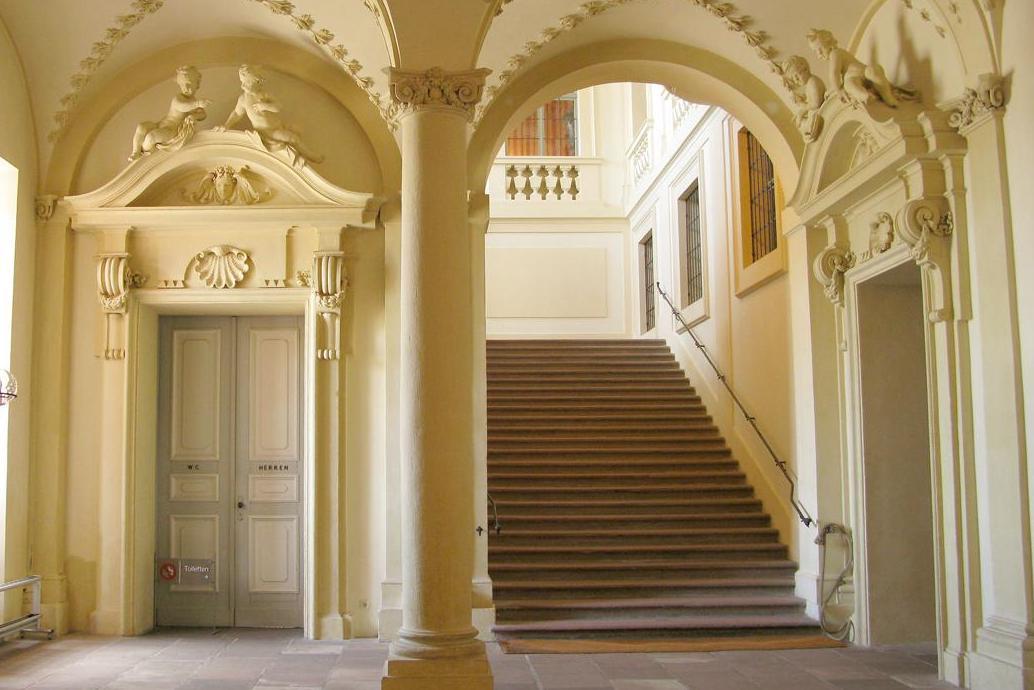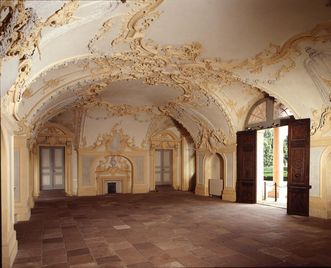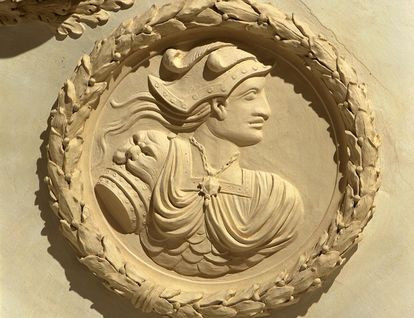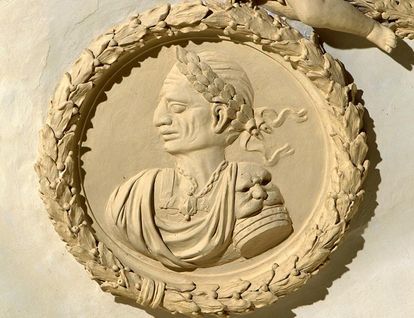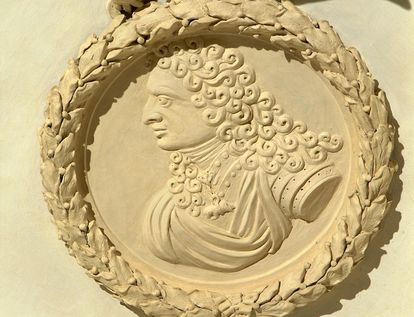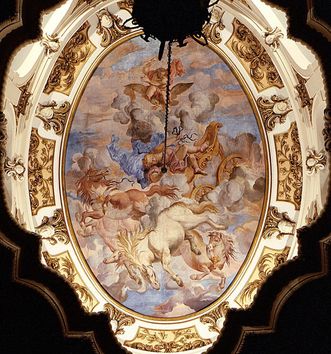FRONT HALL AND GARDEN HALL
The central rooms on the ground floor—the front hall and the garden hall—were decorated with Baroque stucco by Giovanni Battista Artario. The garden hall, however, has changed—the result of Ludwig Wilhelm's impatience! The margrave wanted to have his palace completed as quickly as possible and the architect, Rossi, was forced to use damp lumber. The once flat ceiling became damaged. Rossi's successor, Michael Ludwig Rohrer, repaired the damage by building a brick arch. After 1747, Johannes Schütz decorated it with Rococo stucco.



